
SEOM 2023
19 - 22 Septiembre, Barcelona
|
|
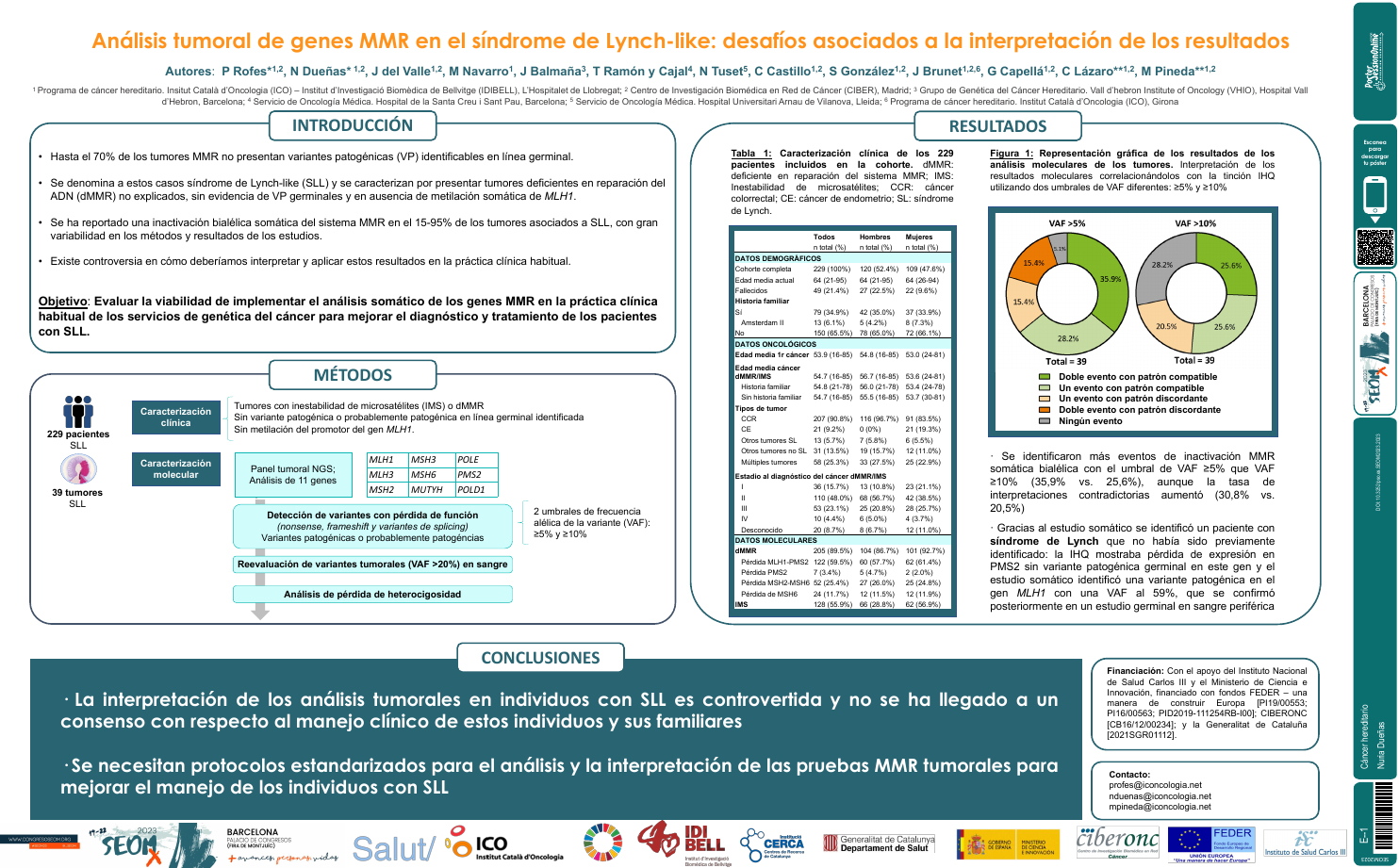
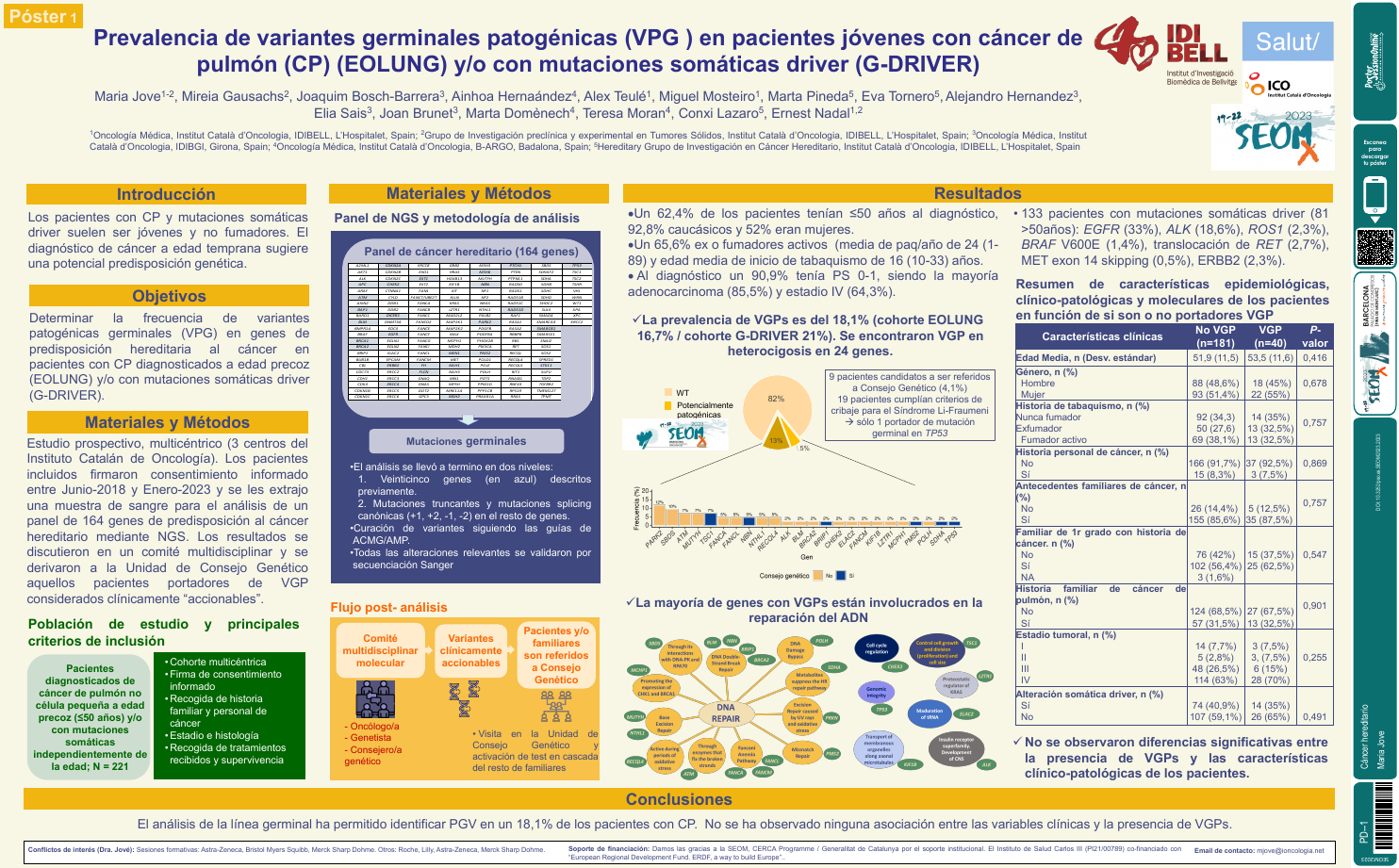
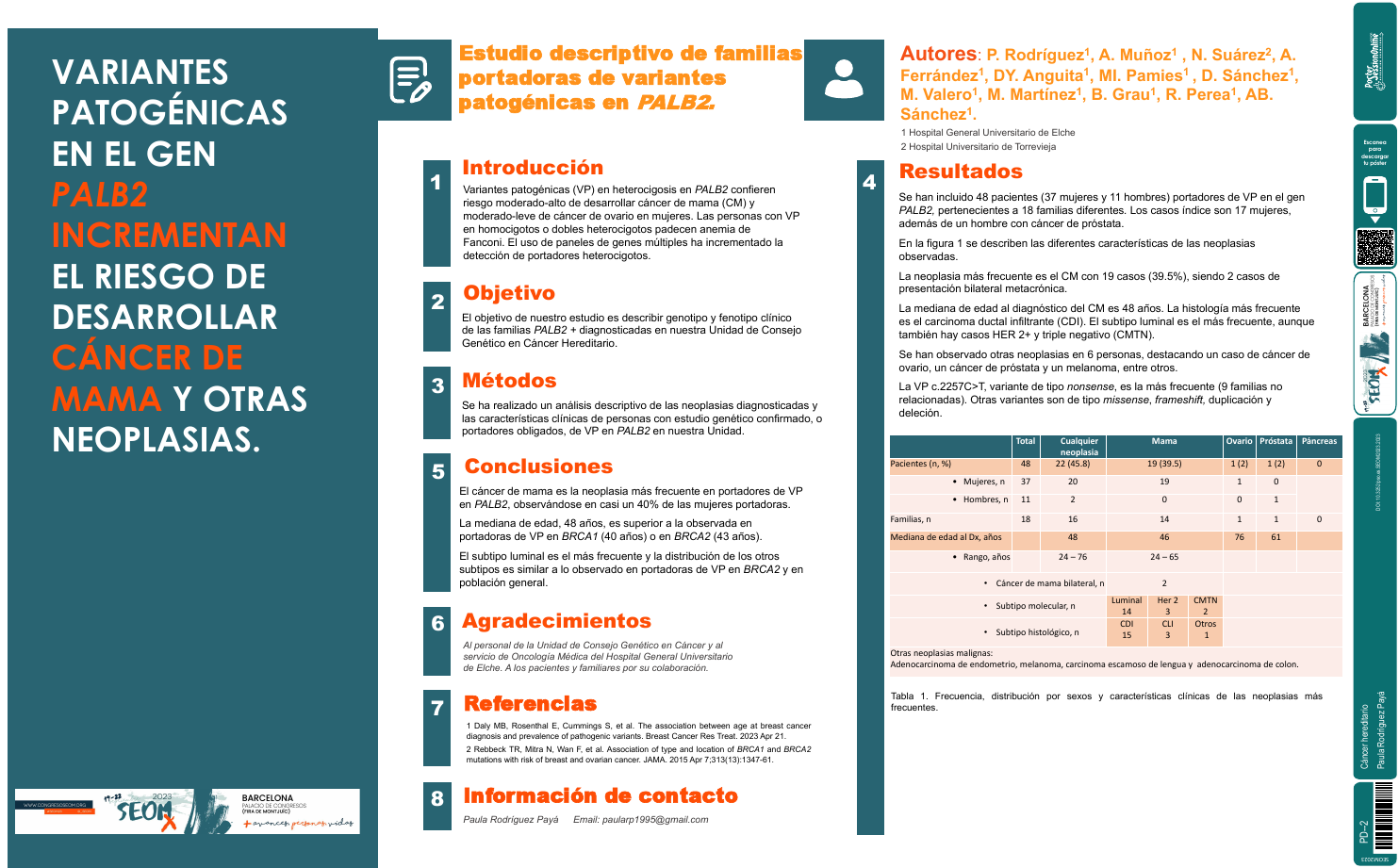
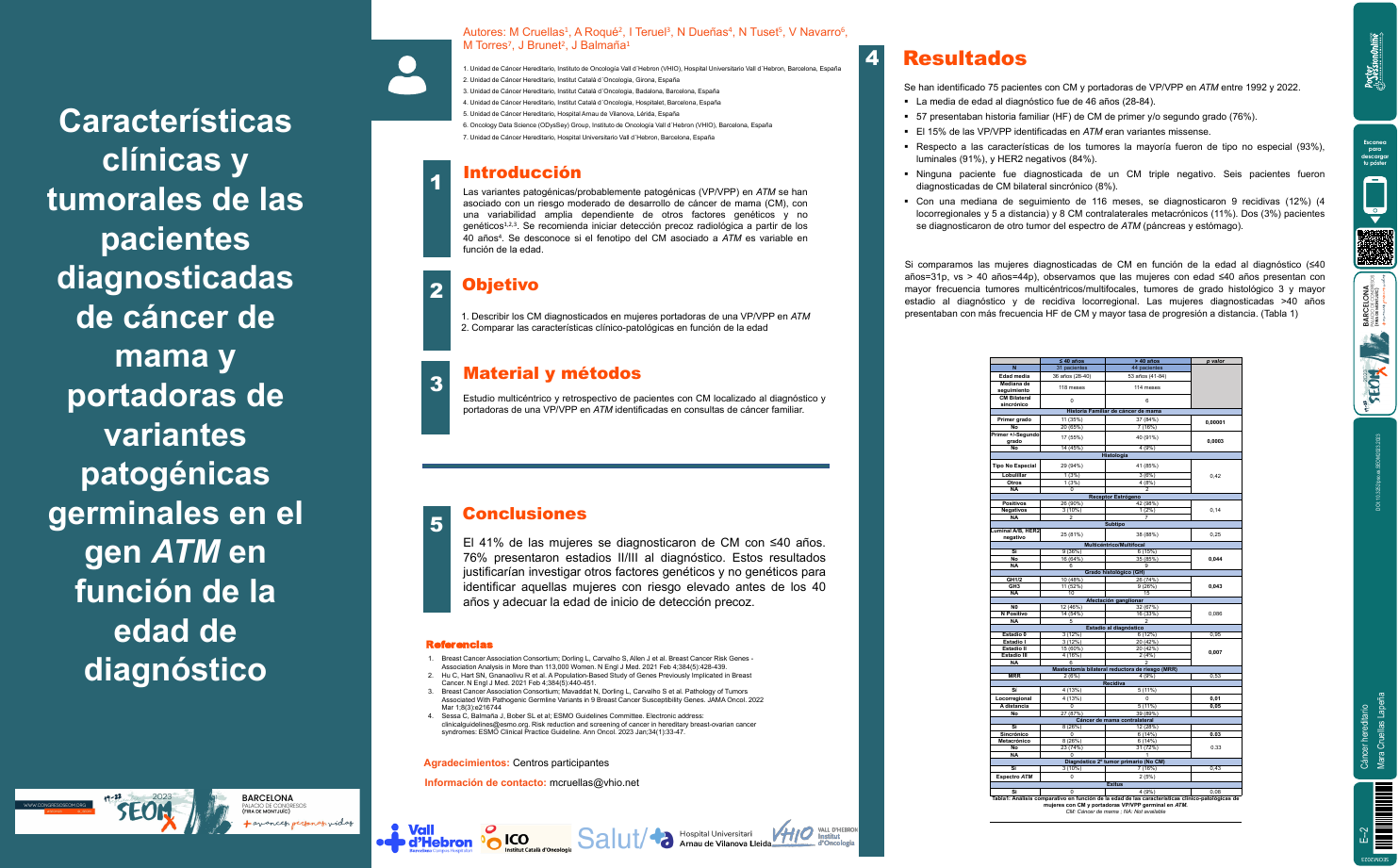
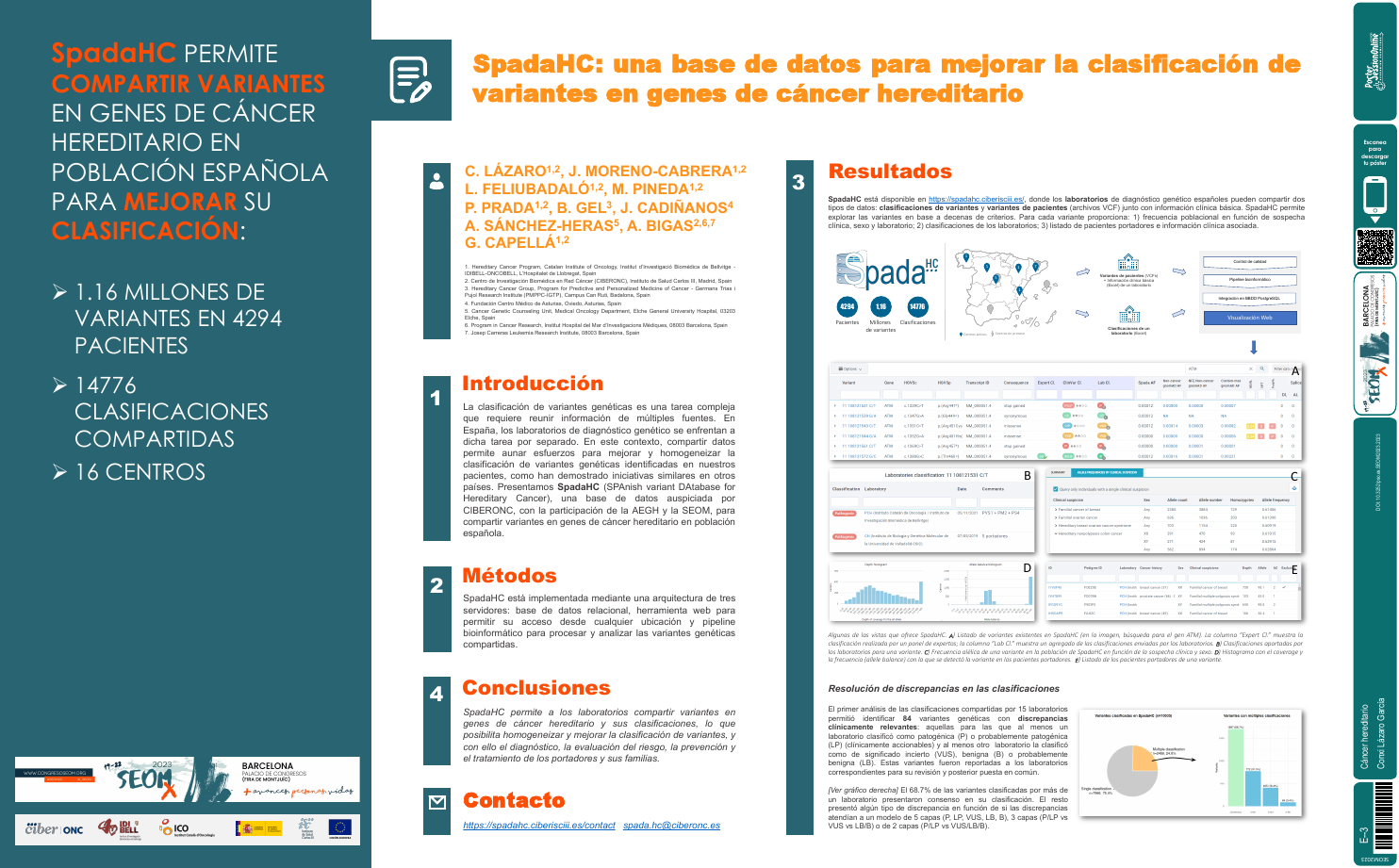
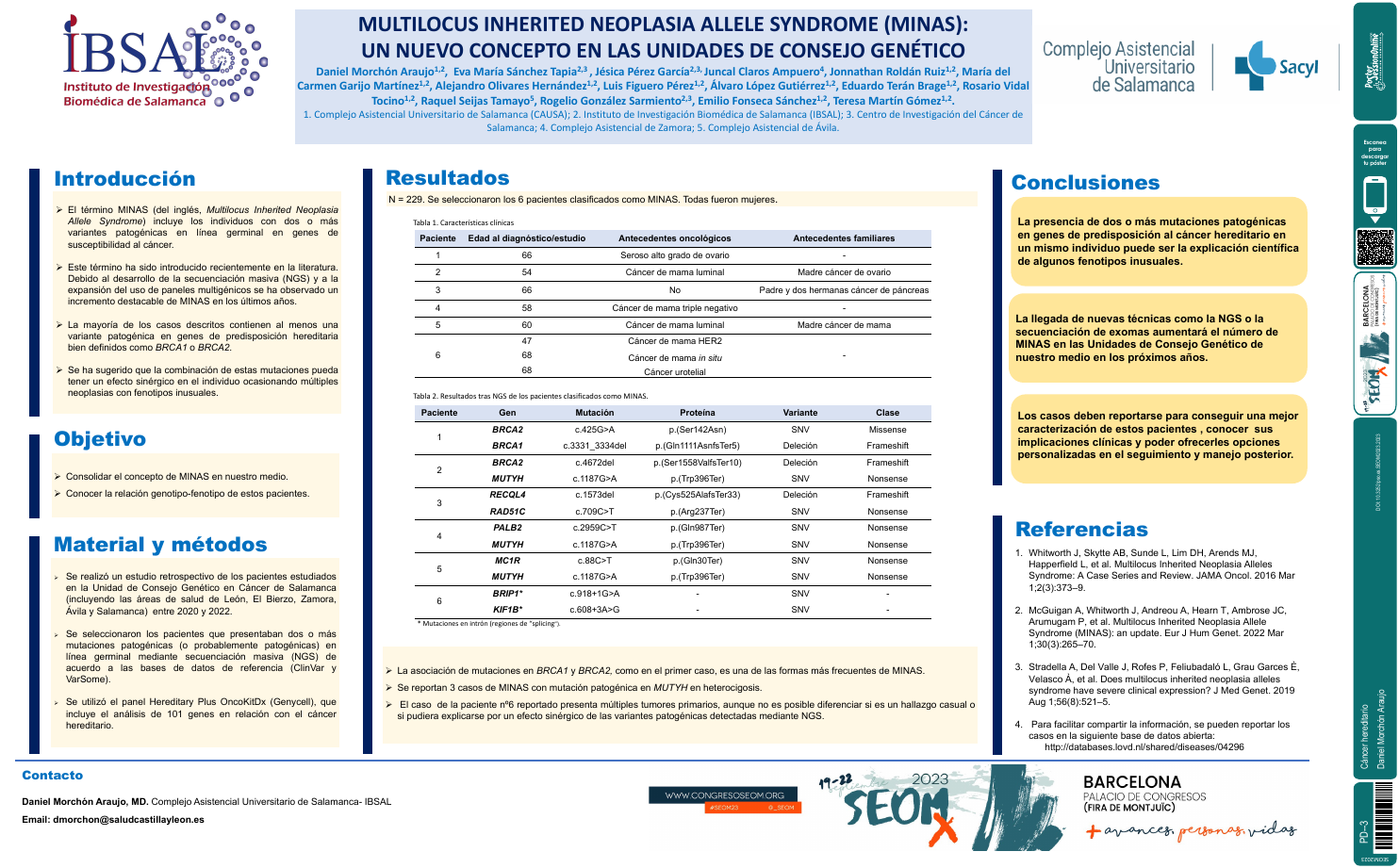
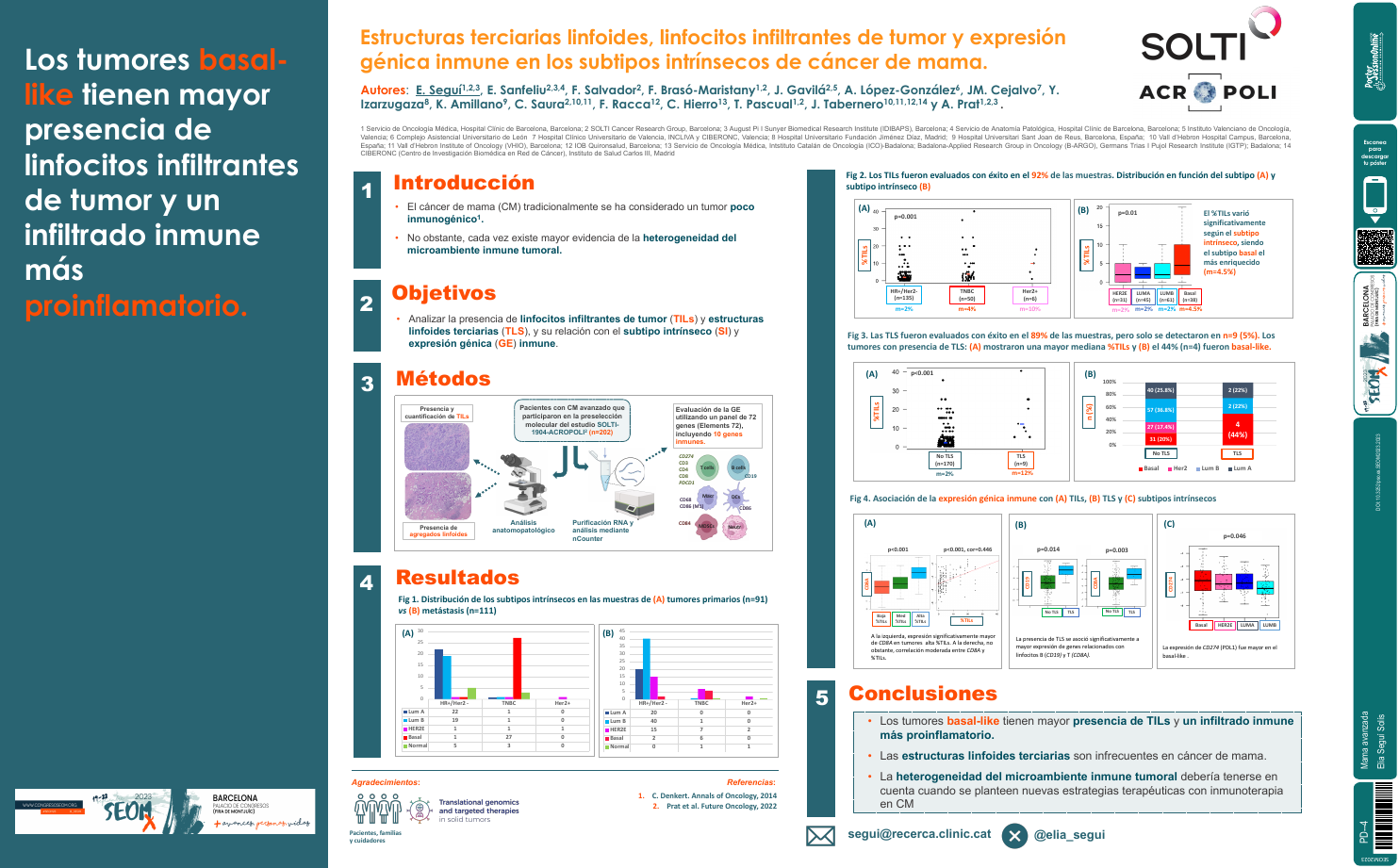
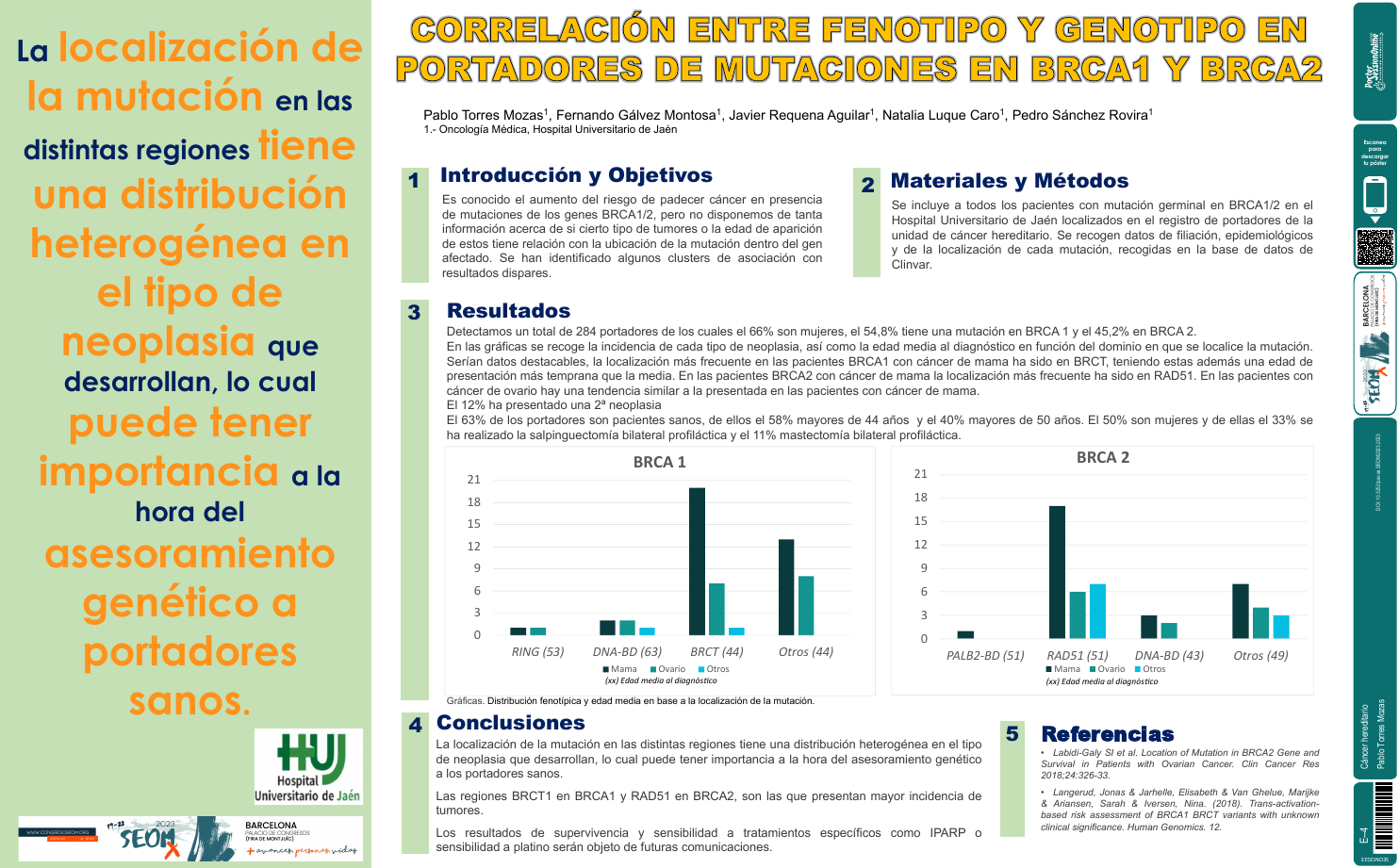
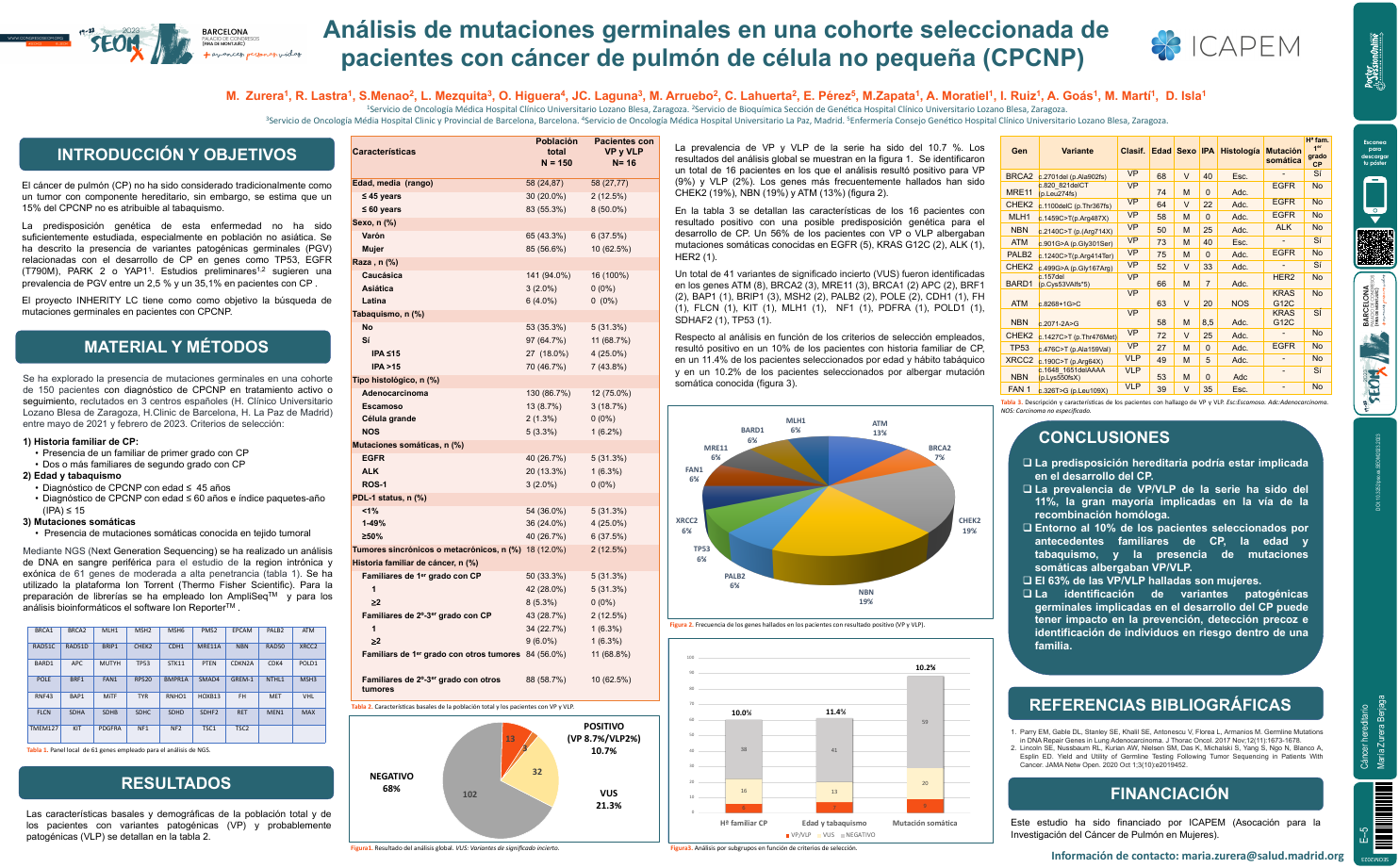
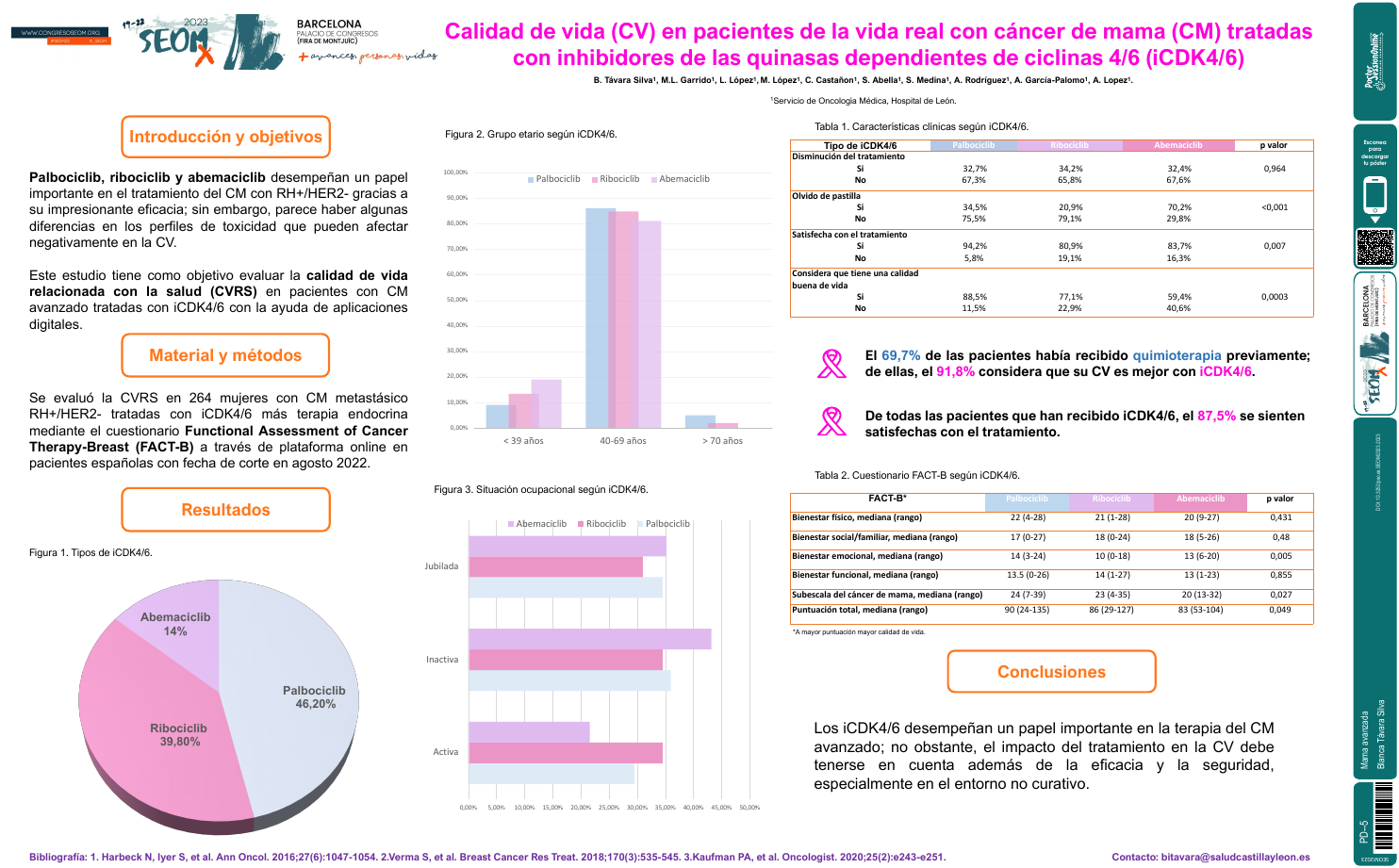
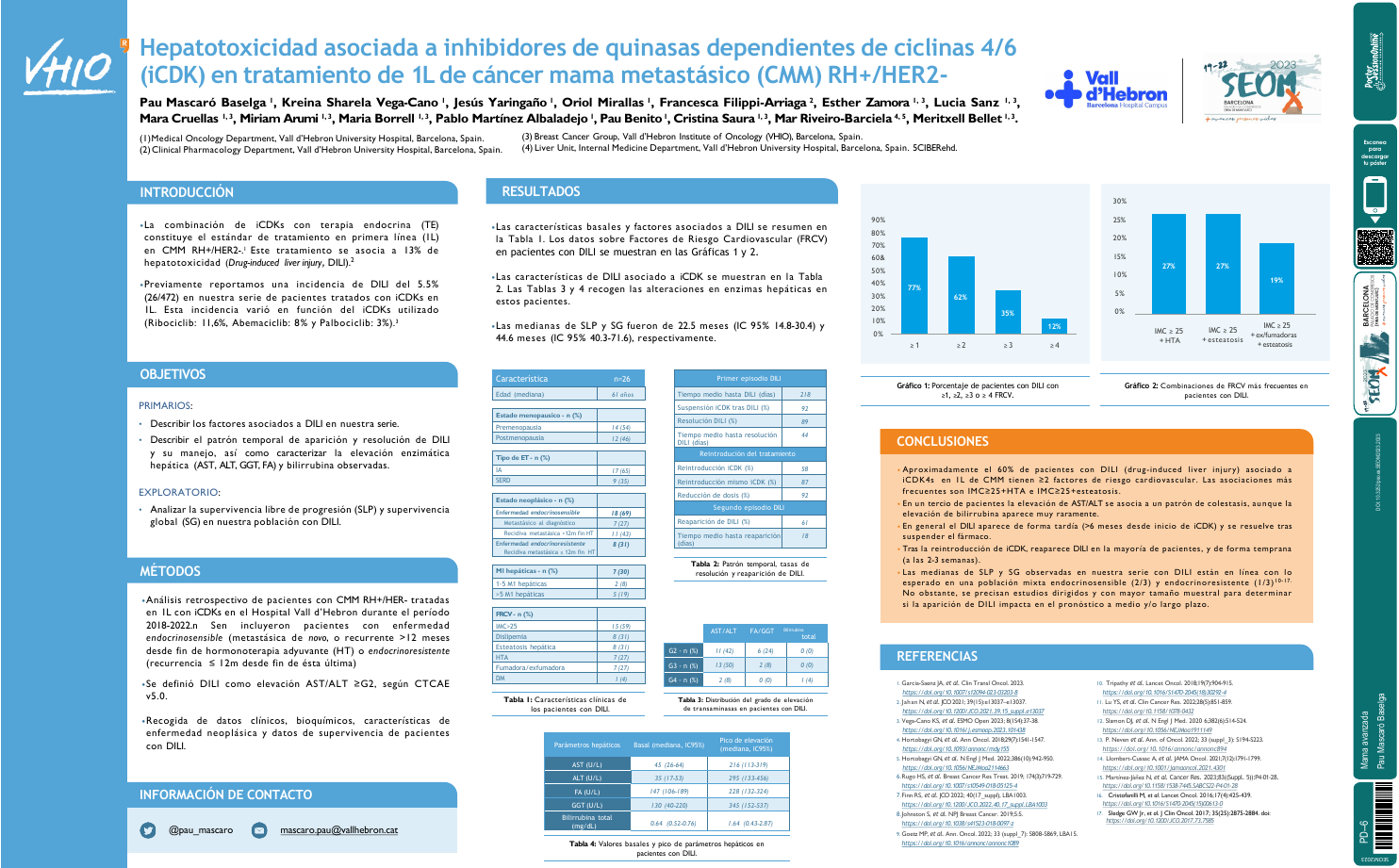
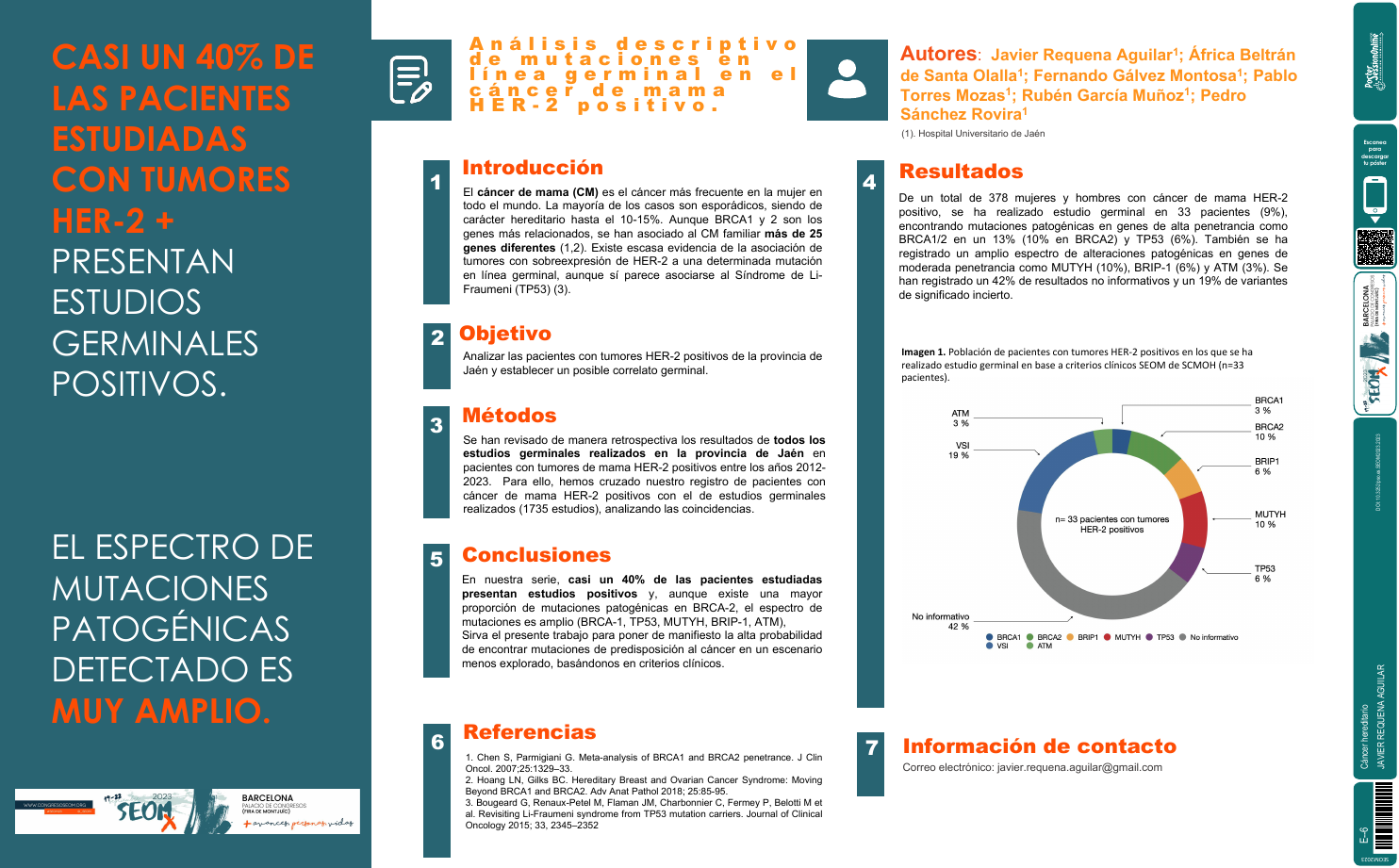
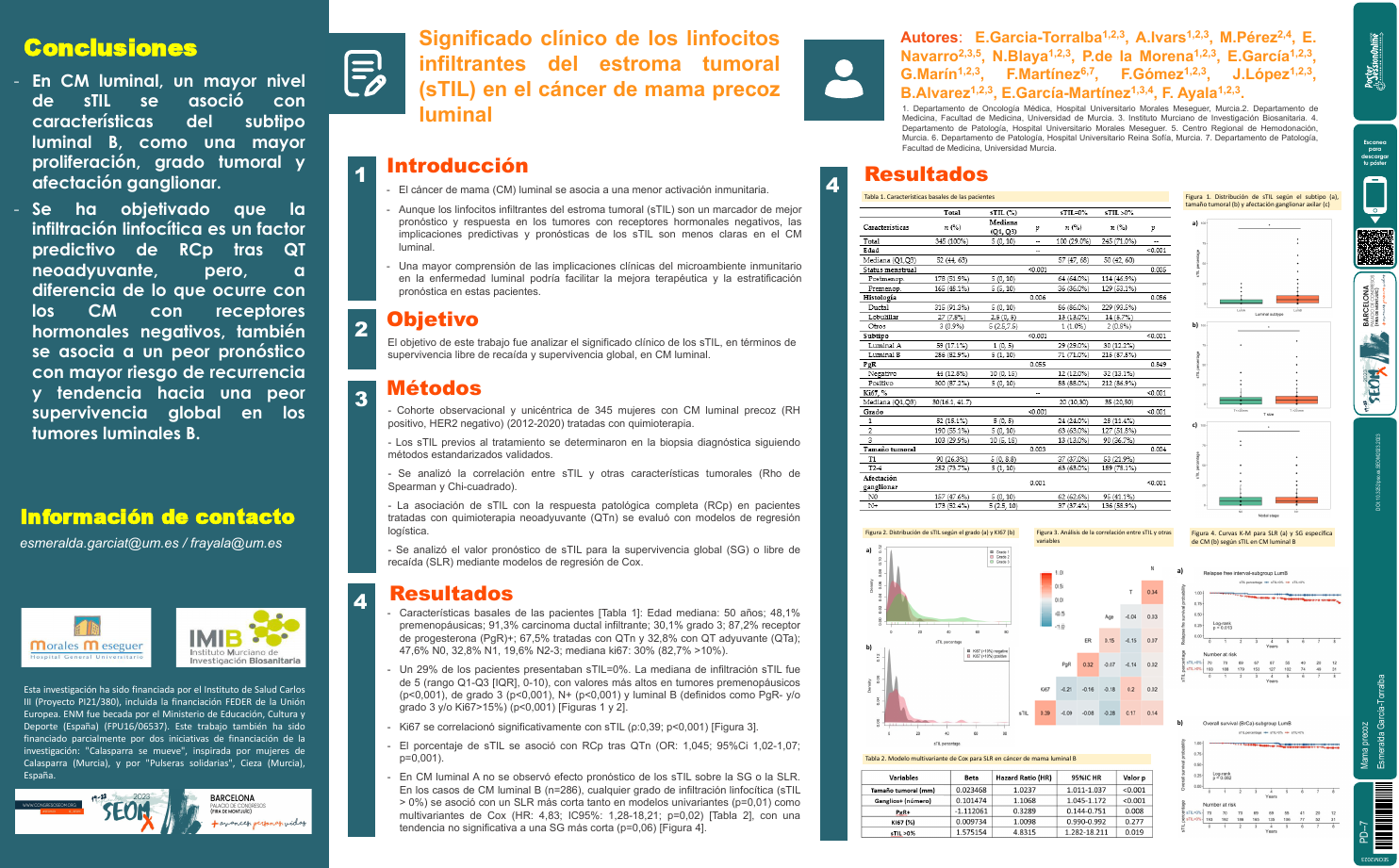
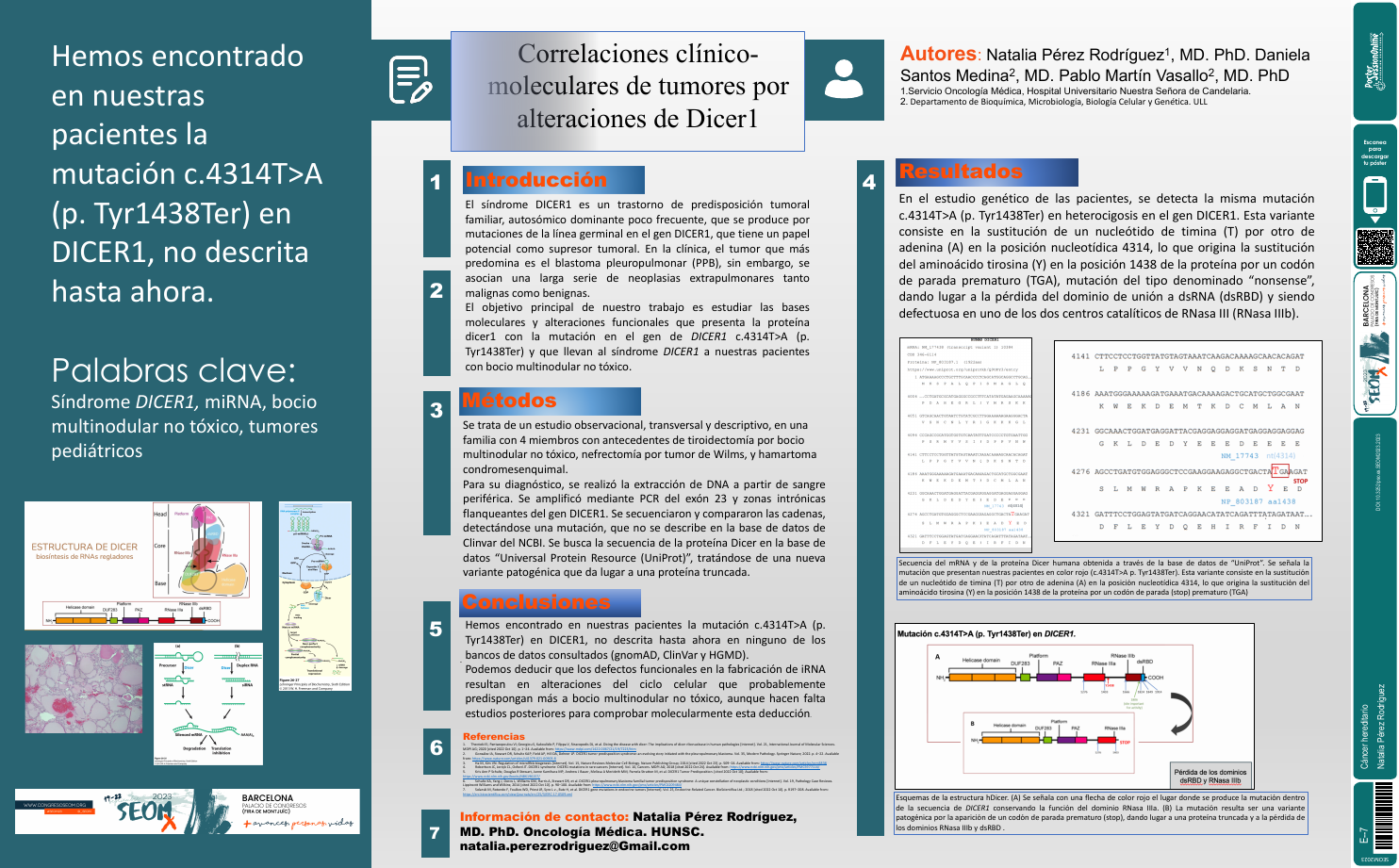
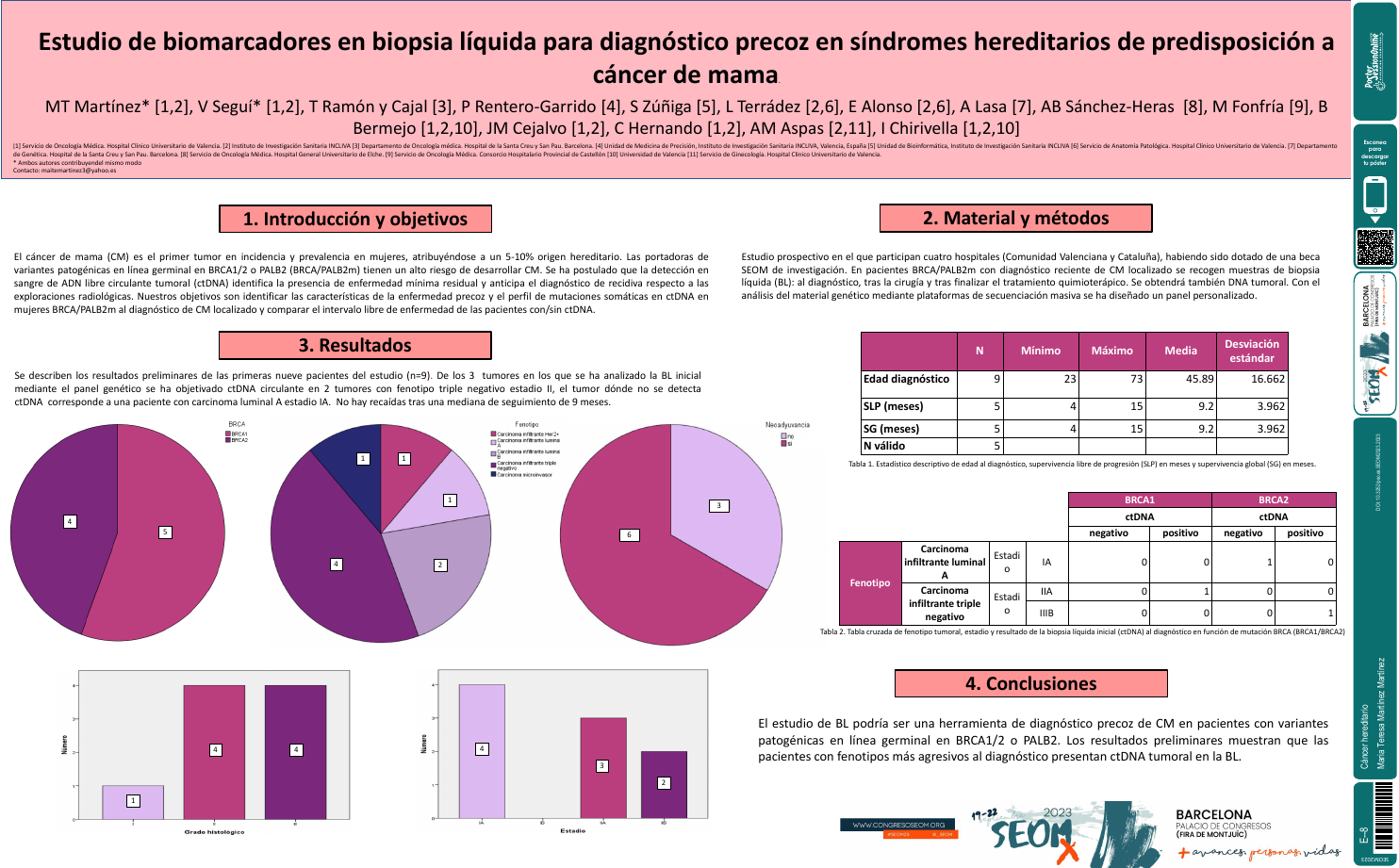
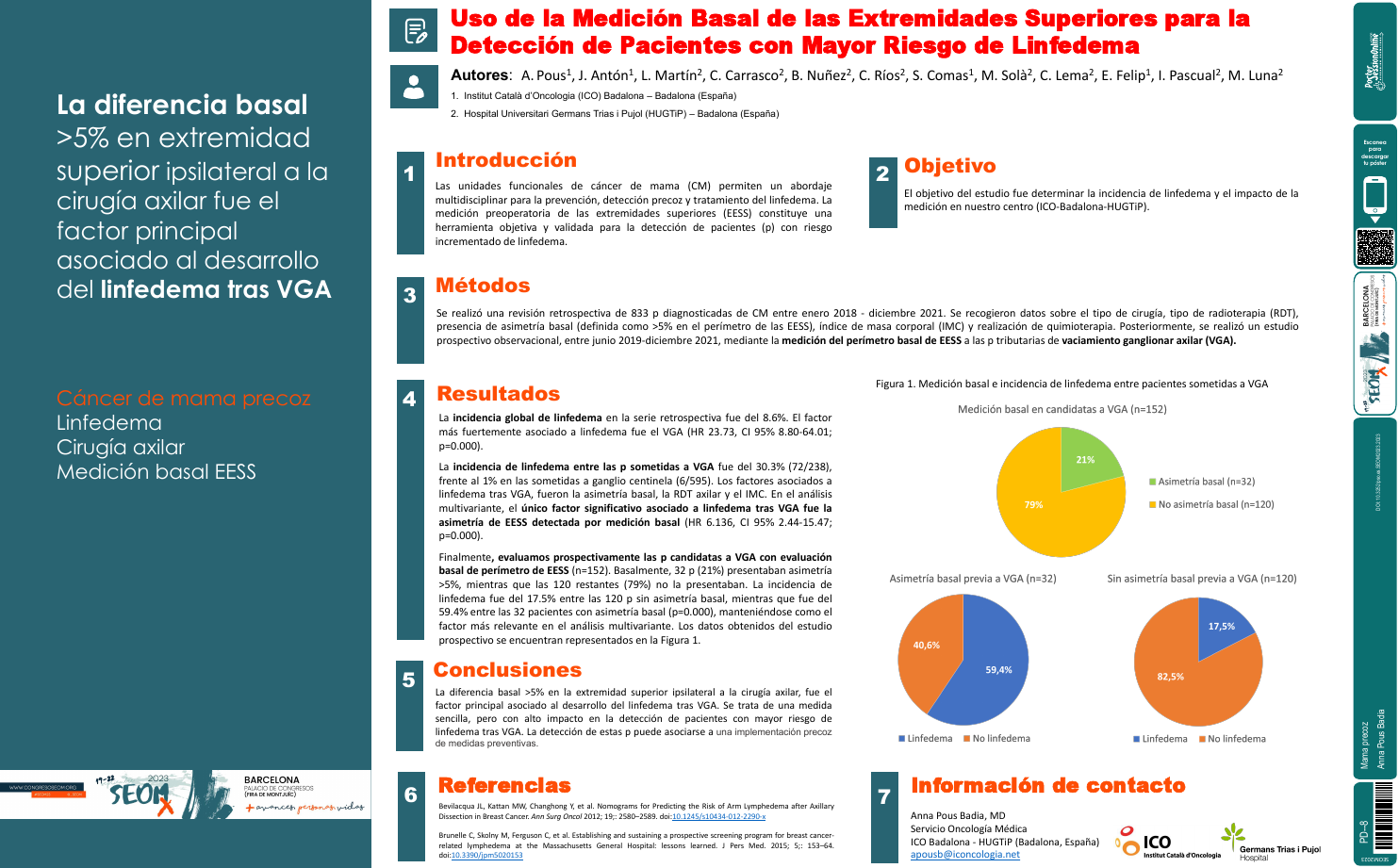
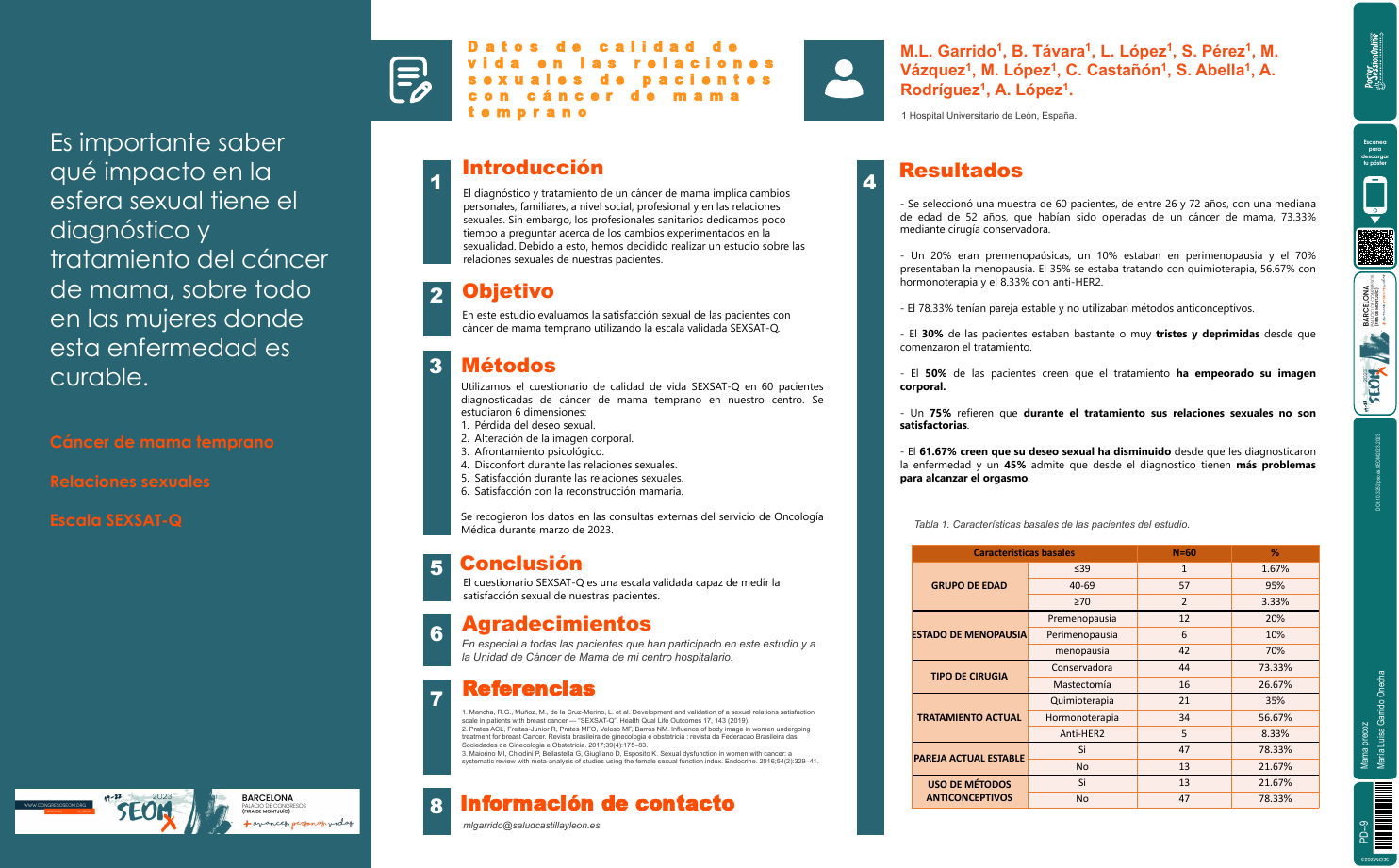
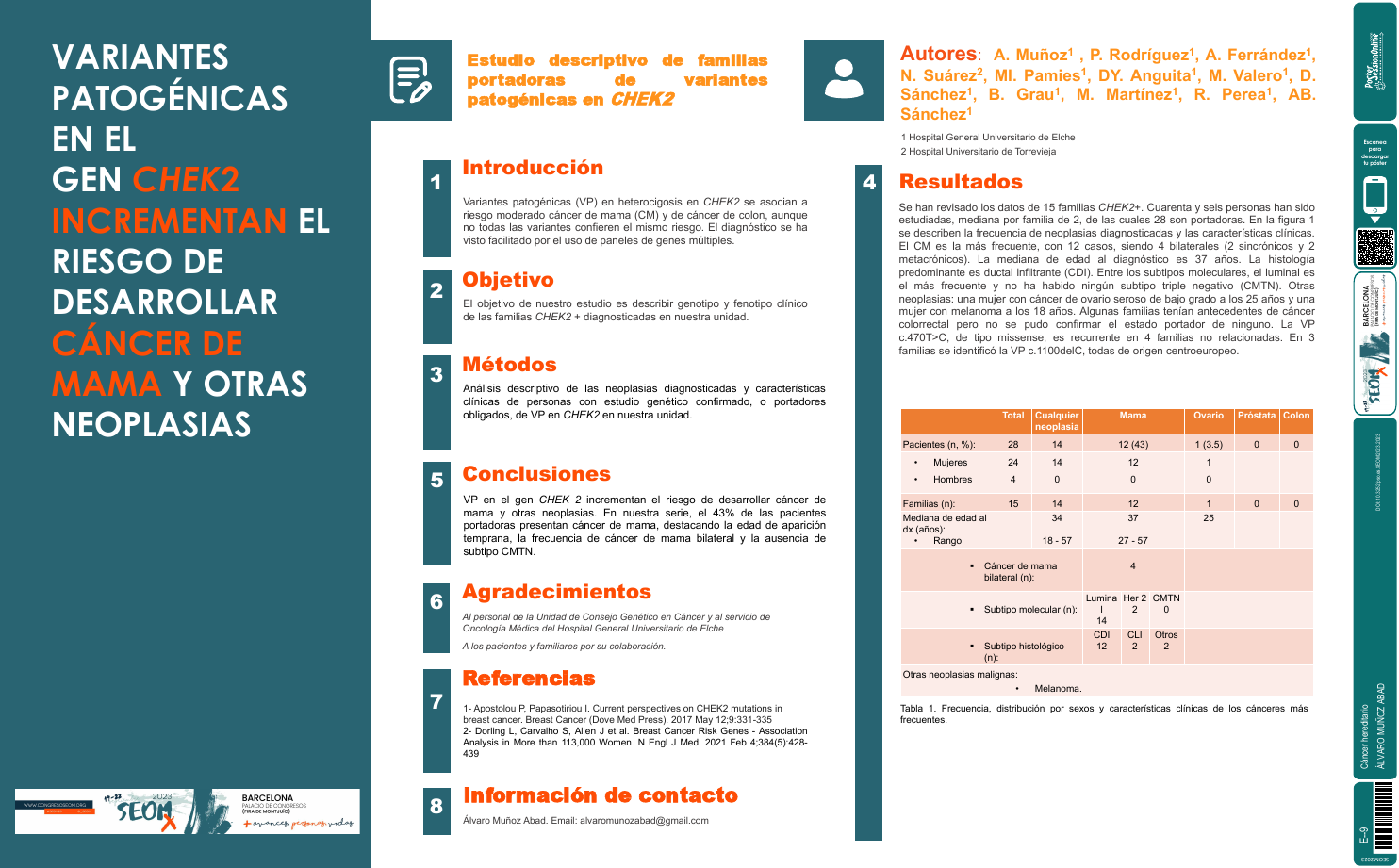
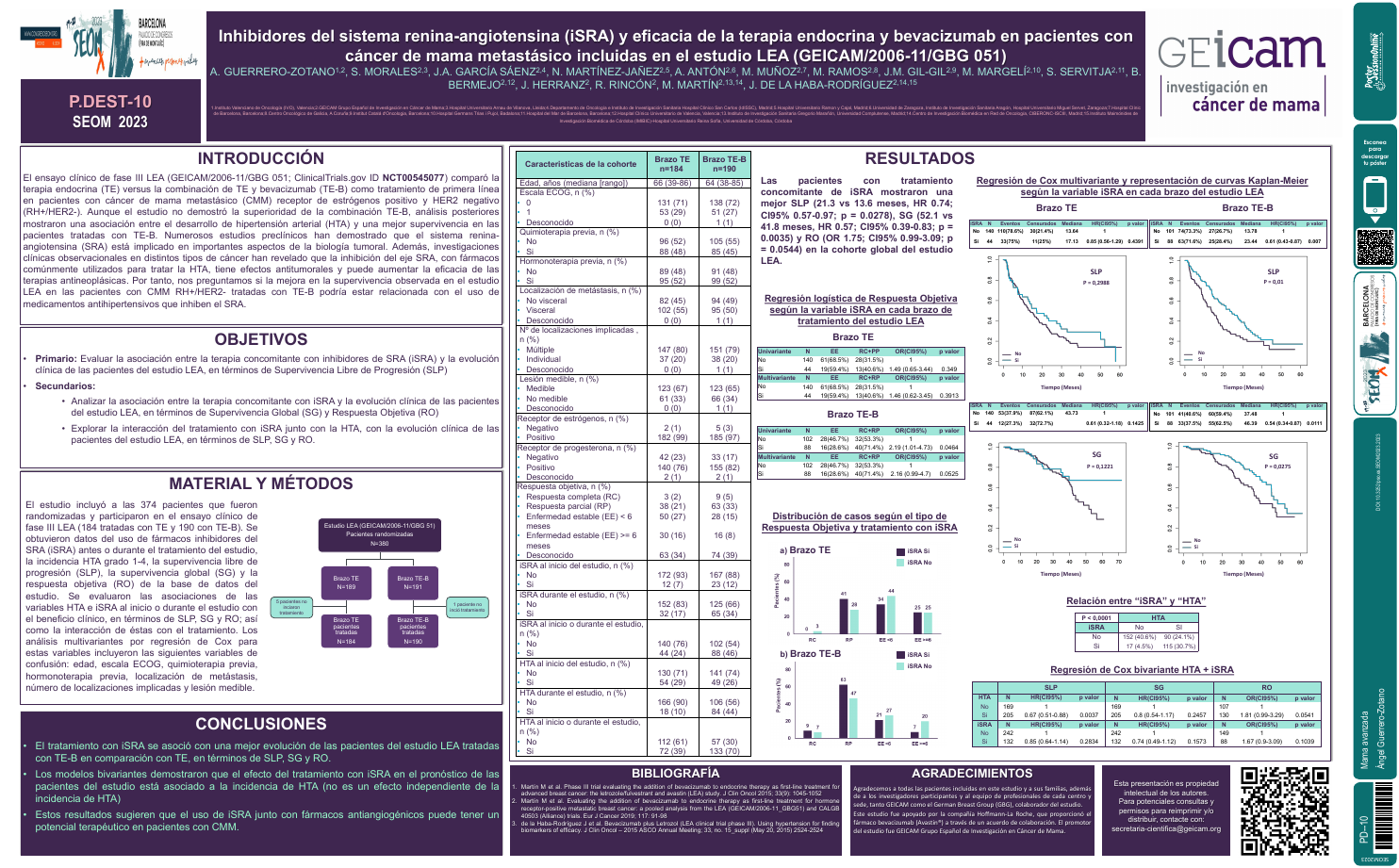
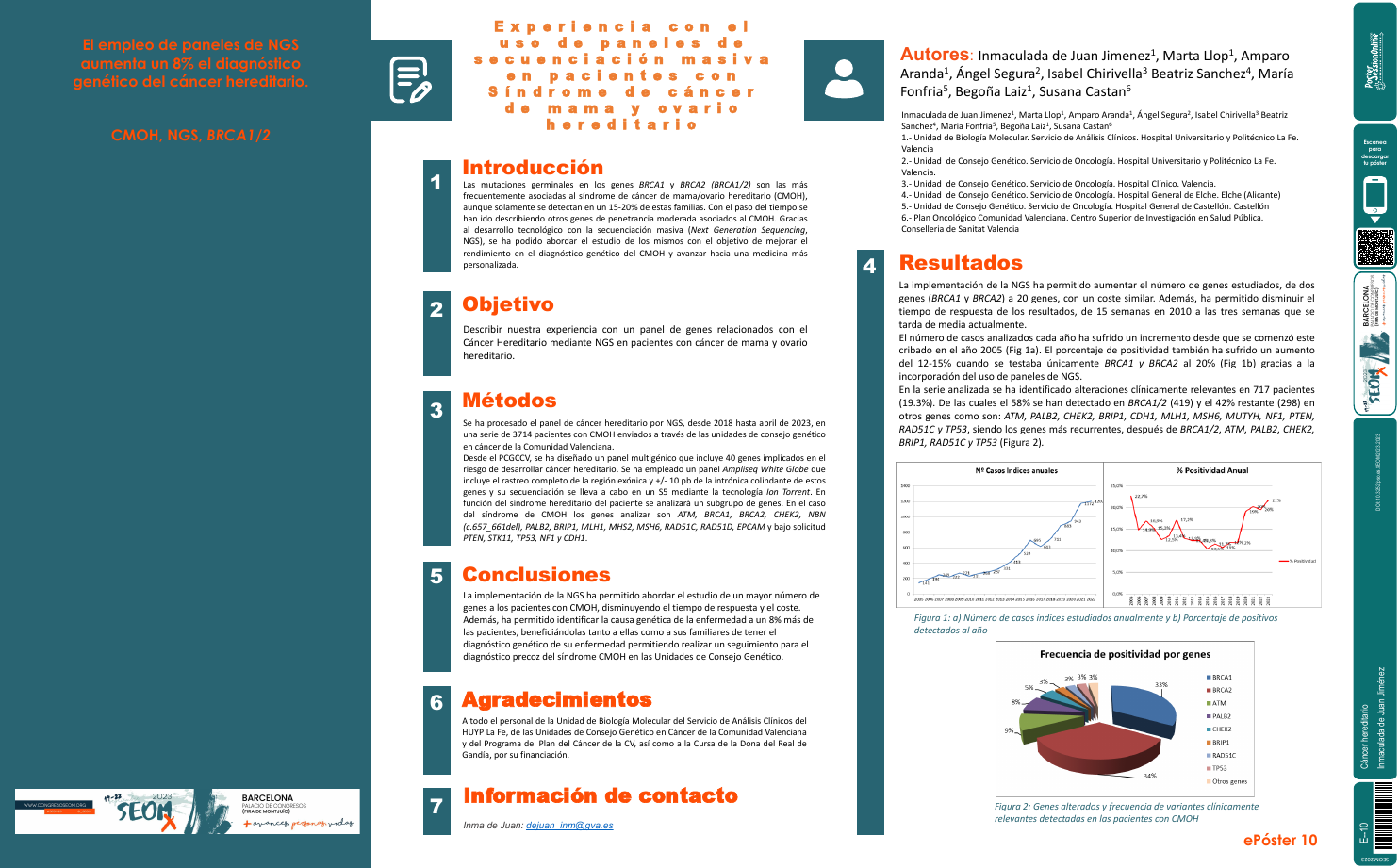
| Análisis tumoral de genes MMR en el sínd.. | Nuria Dueñas .. | P Rofes*, N Dueñas*, J del Val.. | Cáncer hereditario.. | - - | |
| Prevalencia de variantes germinales pato.. | Maria Jove .. | .. | Cáncer hereditario.. | - - | |
| Estudio descriptivo de familias portador.. | Paula Rodríguez Payá .. | .. | Cáncer hereditario.. | - - | |
| Características clínicas y tumorales de .. | Mara Cruellas Lapeña.. | Ariadna Roqué, Iris Teruel, Nu.. | Cáncer hereditario.. | - - | |
| SpadaHC: una base de datos para mejorar .. | Conxi Lázaro García .. | José Marcos Moreno-Cabrera, Li.. | Cáncer hereditario.. | - - | |
| MULTILOCUS INHERITED NEOPLASIA ALLELE SY.. | Daniel Morchón Araujo .. | .. | Cáncer hereditario.. | - - | |
| Estructuras linfoides terciarias, linfoc.. | Elia Seguí Solís.. | Esther Sanfeliu, Fernando Salv.. | Mama avanzada.. | - - | |
| Correlación entre fenotipo y genotipo en.. | Pablo Torres Mozas .. | .. | Cáncer hereditario.. | - - | |
| Análisis de mutaciones germinales en una.. | María Zurera Berjaga .. | Rodrigo Lastra, Sebastián Mena.. | Cáncer hereditario.. | - - | |
| Calidad de vida (CV) en pacientes de la .. | Blanca Távara Silva .. | B. Távara Silva, M.L. Garrido,.. | Mama avanzada.. | - - | |
| HEPATOTOXICIDAD (HeT) ASOCIADA A TRATAMI.. | Pau Mascaró Baselga .. | Kreina Sharela Vega-Cano, Jesú.. | Mama avanzada.. | - - | |
| Análisis descriptivo de mutaciones en lí.. | JAVIER REQUENA AGUILAR .. | África Beltrán de Santa Olalla.. | Cáncer hereditario.. | - - | |
| Significado clínico de los linfocitos in.. | Esmeralda García-Torralba .. | .. | Mama precoz.. | - - | |
| Correlaciones clínico-moleculares de tum.. | Natalia Pérez Rodríguez.. | .. | Cáncer hereditario.. | - - | |
| Estudio de biomarcadores en biopsia líqu.. | Maria Teresa Martínez Martínez .. | .. | Cáncer hereditario.. | - - | |
| Uso de la medición basal de las extremid.. | Anna Pous Badia .. | .. | Mama precoz.. | - - | |
| DATOS DE CALIDAD DE VIDA EN LAS RELACION.. | María Luisa Garrido Onecha .. | Blanca Távara Silva, Laura Lóp.. | Mama precoz.. | - - | |
| Estudio descriptivo de familias portador.. | ÁLVARO MUÑOZ ABAD .. | .. | Cáncer hereditario.. | - - | |
| Inhibidores del sistema renina-angiotens.. | Ángel Guerrero-Zotano .. | .. | Mama avanzada.. | - - | |
| Experiencia con el uso de paneles de sec.. | Inmaculada de Juan Jiménez .. | .. | Cáncer hereditario.. | - - | |
Abstract
Thunderstorm-related asthma in patients sensitised to olea europaea pollen: twenty emergency department visits for asthmatic symptoms in one single day Losappio, Laura1; Heffler, Enrico2; Falco, Antonio1; Contento, Francesco1; Cannito, Cosimo1; Rolla, Giovanni2 1"Dimiccoli" Hospital, Emergency Department, Barletta, Italy; 2University of Torino - AO Mauriziano "Umberto I", Allergy and Clinical Immunology, Torino, Italy
Background: Associations between thunderstorm and asthma morbidity have been reported in several countries. Common to all epidemics of thunderstorm-related asthma is a significant increase in atmospheric allergen load during and immediately after a thunderstorm. Sensitization to Alternaria species or to grass and parietaria pollens has been suggested to play a key role in thunderstorm-related asthma. The only reported event of thunderstorm-related asthma in Mediterranean area was attributed to sensitization to parietaria pollen.
Method: here we describe a series of 20 patients who presented to Emergency Department in Barletta (94,000 inhabitants), Puglia (Italy) for sudden and severe asthmatic symptoms between May 27th and 28th 2010 (from15:36 to 5:02), immediately after a violent thunderstorm which occurred following a very hot morning (mean temperature: 29°C). All the patients have been subsequently visited by an allergist and underwent allergological work-up which included skin prick tests and a careful clinical history. Local pollen counts were available.
Result: Between May 10th and June 10th 2010, 86 Emergency Department asthma visits were recorded, 20 of them during the study day. Patients' mean age was 44.25 +/- 18.5 years (range: 9-81), 8/20 females, 2 smokers, 16 with a previous history of known respiratory allergy. Only two patients regularly took anti-asthma drugs. All 20 patients were sensitized to Olea europaea pollen, 7 of whom were monosensitized. Ten patients were sensitized to grass, 7 to parietaria, 5 to compositae, 5 to cypress, 5 to house dust mites, 3 to dog and 1 to cat danders. No patient was sensitized to Alternaria. Mean pollen count was 17 granules/m3 for Olea europaea, 6 granules/m3 for grass pollen.
Conclusion: This is, in our knowledge, the second epidemic of thunderstorm related asthma described in Mediterranean area and the first one in which sensitization to Olea europaea played a key-role. In conclusion, our report indicates that thunderstorm asthma may involve different allergens (not only fungal spores and grass or parietaria pollen) in different geographic areas, depending on the seasonality of thunderstorms and allergenic pollen.